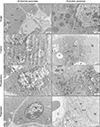1. Kim H. Cerulein pancreatitis: oxidative stress, inflammation, and apoptosis. Gut Liver. 2008; 2:74–80.
2. Fisic E, Poropat G, Bilic-Zulle L, Licul V, Milic S, Stimac D. role of IL-6, 8, and 10, sTNFr, CRP, and pancreatic elastase in the prediction of systemic complications in patients with acute pancreatitis. Gastroenterol Res Pract. 2013; 2013:282645.
3. McKay CJ, Gallagher G, Brooks B, Imrie CW, Baxter JN. Increased monocyte cytokine production in association with systemic complications in acute pancreatitis. Br J Surg. 1996; 83:919–923.
4. Al-Bahrani AZ, Ammori BJ. Clinical laboratory assessment of acute pancreatitis. Clin Chim Acta. 2005; 362:26–48.
5. Schoenberg MH, Buchler M, Gaspar M, Stinner A, Younes M, Melzner I, et al. Oxygen free radicals in acute pancreatitis of the rat. Gut. 1990; 31:1138–1143.
6. Yu JH, Lim JW, Namkung W, Kim H, Kim KH. Suppression of cerulein-induced cytokine expression by antioxidants in pancreatic acinar cells. Lab Invest. 2002; 82:1359–1368.
7. Gorelick FS, Adler G, Kerin HF. Cerulein-induced pancreatitis. In : Go VW, DiMagno EP, Gardner JD, Lebenthal E, Reber HA, Scheele GA, editors. The pancreas: biology, pathobiology, and disease. 2nd ed. New York: Raven Press;1993. p. 501–526.
8. Lerch MM, Adler G. Experimental animal models of acute pancreatitis. Int J Pancreatol. 1994; 15:159–170.
9. Zerem E, Imamovic G, Susic A, Haracic B. Step-up approach to infected necrotising pancreatitis: a 20-year experience of percutaneous drainage in a single centre. Dig Liver Dis. 2011; 43:478–483.
10. Kambhampati S, Park W, Habtezion A. Pharmacologic therapy for acute pancreatitis. World J Gastroenterol. 2014; 20:16868–16880.
11. Sugiyama Y, Kato S, Abe M, Mitsufuji S, Takeuchi K. Different effects of dexamethasone and the nitric oxide synthase inhibitor L-NAME on caerulein-induced rat acute pancreatitis, depending on the severity. Inflammopharmacology. 2005; 13:291–301.
12. Ogino K, Hobara T, Ishiyama H, Yamasaki K, Kobayashi H, Izumi Y, et al. Antiulcer mechanism of action of rebamipide, a novel antiulcer compound, on diethyldithiocarbamate-induced antral gastric ulcers in rats. Eur J Pharmacol. 1992; 212:9–13.
13. Huang YL, Kou JP, Ma L, Song JX, Yu BY. Possible mechanism of the anti-inflammatory activity of ruscogenin: role of intercellular adhesion molecule-1 and nuclear factor-kappaB. J Pharmacol Sci. 2008; 108:198–205.
14. Rouse R, Xu L, Stewart S, Zhang J. High fat diet and GLP-1 drugs induce pancreatic injury in mice. Toxicol Appl Pharmacol. 2014; 276:104–114.
15. Erturkuner SP, Yaprak Sarac E, Gocmez SS, Ekmekci H, Ozturk ZB, Seckin I, et al. Anti-inflammatory and ultrastructural effects of Turkish propolis in a rat model of endotoxin-induced uveitis. Folia Histochem Cytobiol. 2016; 54:49–57.
16. Seckin I, Uzunalan M, Ayaz Pekpak M, Kokturk S, Sonmez HA, Gungor ZB, et al. TGF-b1 expression and mesangial alterations in rat glomeruli of an experimental chronic nephrosis model. Cerrahpaşa Tıp Dergisi. 2019; 43:6–12.
17. Hyun JJ, Lee HS. Experimental models of pancreatitis. Clin Endosc. 2014; 47:212–216.
18. Jha RK, Ma Q, Lei Z, Sha H. Resveratrol ameliorates the deleterious effect of severe acute pancreatitis. Cell Biochem Biophys. 2012; 62:397–402.
19. Ercan G, Ilbar Tartar R, Solmaz A, Gulcicek OB, Karagulle OO, Meric S, et al. Potent therapeutic effects of ruscogenin on gastric ulcer established by acetic acid. Asian J Surg. 2019; 07. 22. S1015-9584(19)30365-3. DOI:
10.1016/j.asjsur.2019.07.001. [Epub].
20. Dawra R, Sah RP, Dudeja V, Rishi L, Talukdar R, Garg P, et al. Intra-acinar trypsinogen activation mediates early stages of pancreatic injury but not inflammation in mice with acute pancreatitis. Gastroenterology. 2011; 141:2210–2217.e2.
21. Gukovsky I, Reyes CN, Vaquero EC, Gukovskaya AS, Pandol SJ. Curcumin ameliorates ethanol and nonethanol experimental pancreatitis. Am J Physiol Gastrointest Liver Physiol. 2003; 284:G85–G95.
22. Li ZD, Ma QY, Luo YH. Effect of resveratrol-induced FasL up-regulation on the apoptosis of pancreatic acinar cells in rats with severe acute pancreatitis. Nan Fang Yi Ke Da Xue Xue Bao. 2009; 29:454–457.
23. Lin ZS, Ku CF, Guan YF, Xiao HT, Shi XK, Wang HQ, et al. Dihydro-resveratrol ameliorates lung injury in rats with cerulein-induced acute pancreatitis. Phytother Res. 2016; 30:663–670.
24. Camargo EA, Santana DG, Silva CI, Teixeira SA, Toyama MH, Cotrim C, et al. Inhibition of inducible nitric oxide synthase-derived nitric oxide as a therapeutical target for acute pancreatitis induced by secretory phospholipase A2. Eur J Pain. 2014; 18:691–700.
25. Gulcubuk A, Haktanir D, Cakiris A, Ustek D, Guzel O, Erturk M, et al. The effects of resveratrol on tissue injury, oxidative damage, and pro-inflammatory cytokines in an experimental model of acute pancreatitis. J Physiol Biochem. 2014; 70:397–406.
26. Xu X, Zeng W, Diaz J, Lau KS, Gukovskaya AC, Brown RJ, et al. nNOS and Ca2+ influx in rat pancreatic acinar and submandibular salivary gland cells. Cell Calcium. 1997; 22:217–228.
27. Cao G, Jiang N, Hu Y, Zhang Y, Wang G, Yin M, et al. Ruscogenin attenuates cerebral ischemia-induced blood-brain barrier dysfunction by suppressing TXNIP/NLRP3 inflammasome activation and the MAPK pathway. Int J Mol Sci. 2016; 08. 29. 17(9):E1418. DOI:
10.3390/ijms17091418.
28. Kumar M, Soni AK, Shukla S, Kumar A. Chemopreventive potential of Tribulus terrestris against 7,12- dimethylbenz (a) anthracene induced skin papillomagenesis in mice. Asian Pac J Cancer Prev. 2006; 7:289–294.
29. Durgaprasad S, Pai CG, Vasanthkumar , Alvres JF, Namitha S. A pilot study of the antioxidant effect of curcumin in tropical pancreatitis. Indian J Med Res. 2005; 122:315–318.
30. Ma L, Kou JP, Huang Y, Yu BY. Effect of ruscogenin in on adhesion of HL-60 cells to ECV304 cells. Chin Pharmacol Bull. 2006; 22:706–709.










 PDF
PDF ePub
ePub Citation
Citation Print
Print





 XML Download
XML Download